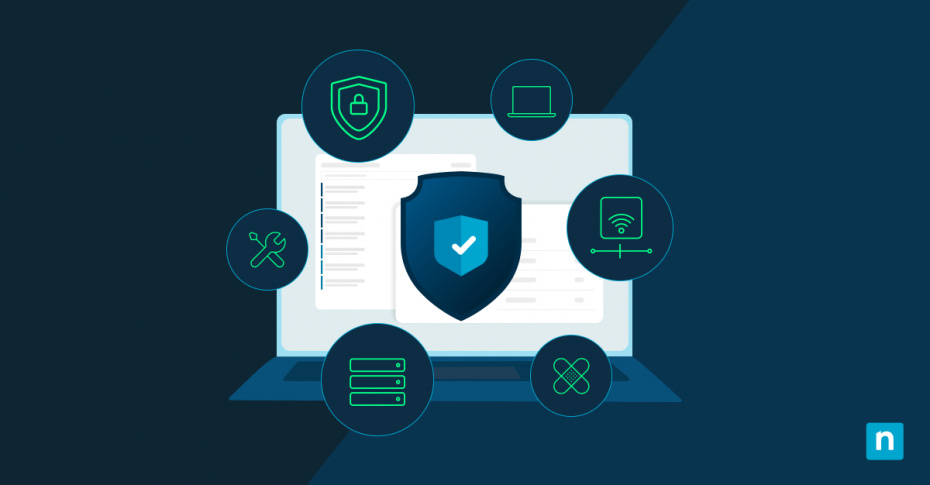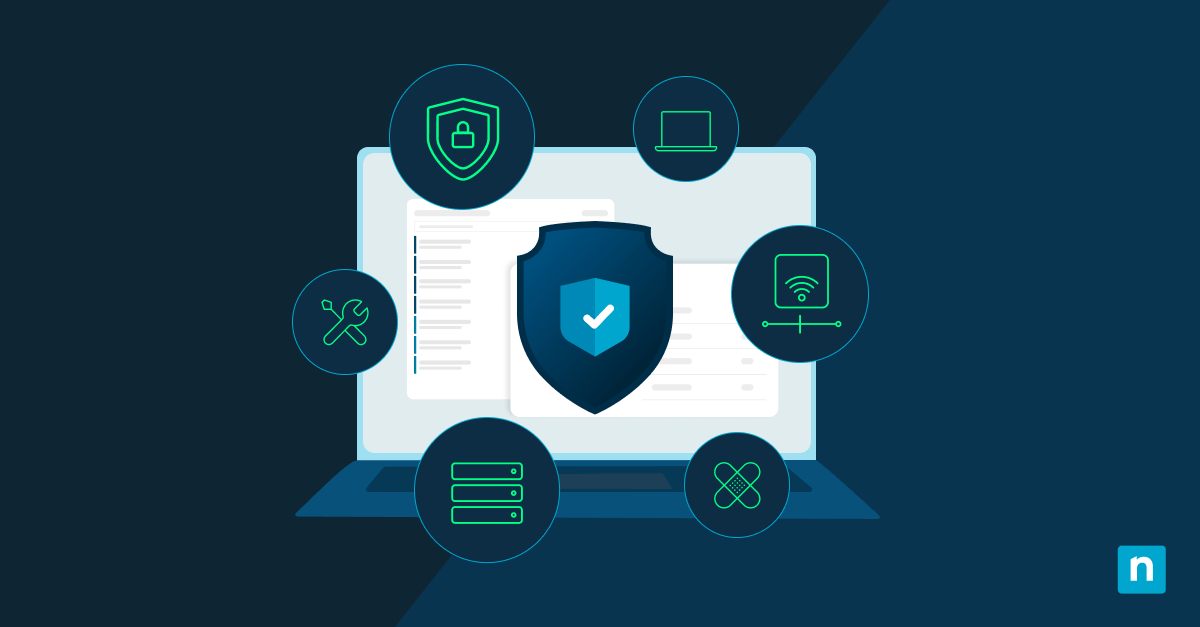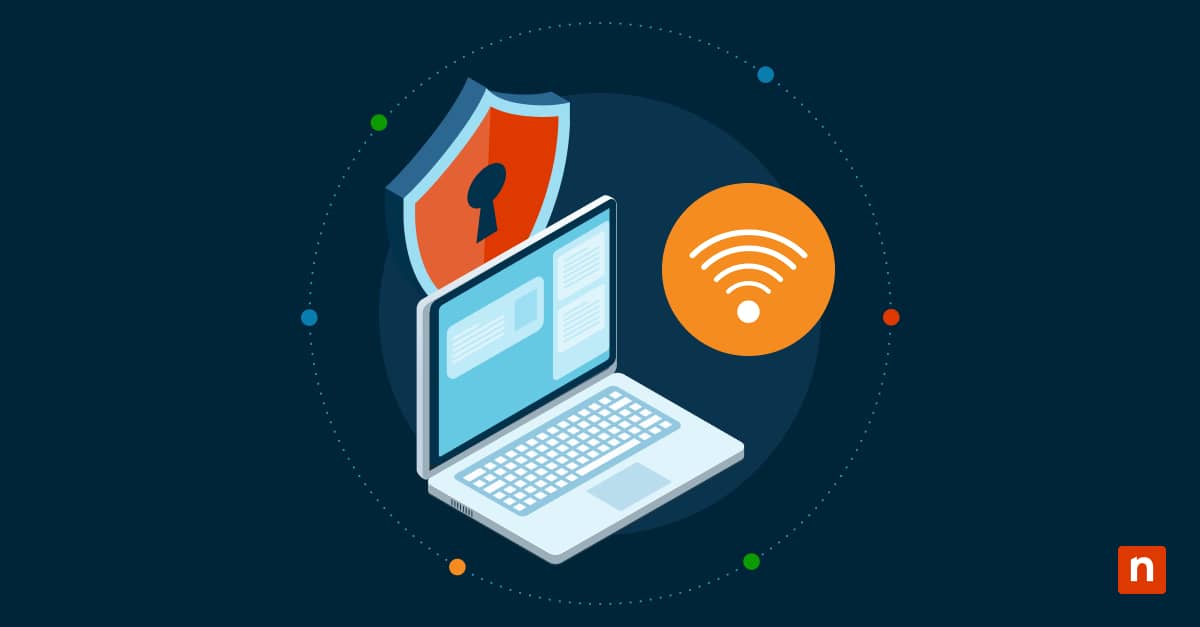A strong cybersecurity strategy forms the backbone of your IT department’s defense against digital threats. As cyber attacks become more sophisticated, you need to create a modern cybersecurity strategy to protect your organization’s assets, data, and reputation.
Understanding the importance of a cybersecurity strategy
Cyber threats evolve rapidly, and your organization’s security measures must keep pace. A well-crafted cybersecurity strategy provides a framework for protecting your digital assets and improves business continuity while maintaining customer trust. It also keeps you compliant with industry regulations and standards.
Your strategy should address current threats and anticipate future risks. It serves as a roadmap for your IT department, guiding decisions about security investments, policies, and practices. Without a comprehensive strategy, your organization may fall victim to costly data breaches, reputational damage, and regulatory fines.
What is a cybersecurity strategy? Key components
A cybersecurity strategy is a comprehensive plan that outlines how your organization will protect its information assets from cyber threats. It encompasses several key components that work together to create a robust defense against potential attacks, including:
Risk assessment and management
Start by using Forbes’ recommendations for identifying and assessing potential risks to your organization’s information systems.
- Catalog your digital assets
- Identify potential threats and vulnerabilities
- Assess the impact of potential security breaches
- Prioritize the risks based on likelihood and potential impact
Once you identify the risks, develop strategies to mitigate them. This might involve implementing new security controls, updating existing ones or accepting certain low-impact risks. Remember that risk management is an ongoing process. As your organization grows and new threats emerge, you need to reassess and adjust your approach to cybersecurity for IT departments accordingly.
Security policy development
Your cybersecurity strategy should include clear, enforceable security policies. These policies outline acceptable use of IT resources, password requirements, data classification and handling procedures, remote access protocols, and Bring Your Own Device (BYOD) guidelines.
When developing these policies, ensure they align with industry standards and regulatory requirements. Clarity is key — your policies should be easily understood by all employees, not just IT staff. Regularly review and update your policies to address new threats and technologies.
Remember, a policy is only effective if it’s enforced, so include mechanisms for monitoring compliance and addressing violations.
Incident response planning
Despite your best efforts, security incidents will still occur. Your strategy should include a comprehensive incident response plan that outlines:
- Steps for identifying and containing security breaches
- Roles and responsibilities during an incident
- Communication protocols
- Steps for system recovery and business continuity
- Procedures for post-incident analysis and improvement
Your incident response plan should be more than just a document — it should be a living process your team regularly practices and refines. Consider conducting regular tabletop exercises to test your plan and ensure all team members understand their roles in the event of a security incident.
Employee training and awareness
Your employees play a crucial role in maintaining cybersecurity. Your strategy should include ongoing training and awareness programs that teach your team to recognize and report potential security threats, enact safe browsing and email practices, properly handle sensitive data, and comply with security policies and procedures.
Consider running regular phishing simulations and security awareness assessments to reinforce training. Remember that effective security awareness isn’t just about sharing information — it’s about changing behavior. Use different training methods like interactive sessions, e-learning modules and real-world simulations to keep employees engaged and reinforce key security concepts.
Continuous monitoring and threat intelligence
Your strategy should include continuous monitoring of your IT environment and the broader threat landscape. This includes implementing security information and event management (SIEM) systems, subscribing to threat intelligence feeds, conducting recurring vulnerability scans and penetration tests, and monitoring dark web forums for potential threats or data leaks.
Beyond these important tools, effective monitoring requires skilled people who can interpret the data and respond appropriately. Consider investing in training for your IT staff or partnering with a managed security service provider to enhance your capabilities.
Building a cybersecurity plan
With the key components in mind, you can now build your cybersecurity plan. Set clear goals, develop an implementation strategy and set up ways to measure success.
Define goals and objectives
Start by setting clear, measurable goals for your organization. Make sure your goals are SMART: Specific, Measurable, Achievable, Relevant, and Time-bound. Consider setting goals in these areas:
- Risk reduction: Aim to reduce the number of successful cyber attacks or the impact of security incidents.
- Compliance: Work towards achieving compliance with specific industry standards or regulations.
- Incident response: Improve your team’s ability to detect, respond to, and recover from security incidents.
- Security awareness: Enhance overall security awareness and behavior among employees.
For example, instead of a vague goal like “improve security awareness,” add an objective to “increase the percentage of employees who successfully identify phishing emails in simulations from 70% to 90% within six months” to your cybersecurity plan.
Implement your plan and monitor your systems
Once you define your goals, create a detailed implementation plan. Your plan should include:
- Specific actions to achieve each objective
- Timelines for implementation
- Resource allocation (budget, personnel, technology)
- Key performance indicators (KPIs) to measure progress
Measuring the effectiveness of your cybersecurity strategy
To ensure your cybersecurity plan remains effective, you need to regularly assess its performance using both quantitative and qualitative measures of success.
Regular audits and assessments
Conduct routine security audits and assessments to evaluate how well your strategy is working. These might include internal and external vulnerability scans, penetration testing, compliance audits and security policy reviews.
Use the results of these assessments to identify areas for improvement in your strategy. Don’t just focus on technical vulnerabilities; also assess how well your policies and procedures are followed and how effectively your team responds to simulated security incidents.
Continuous improvement and updates
Cybersecurity for IT departments is not a “set it and forget it” task. You need to continuously improve and update your strategy to address new threats and technologies. This means staying informed about emerging threats and security trends, regularly reviewing and updating your security policies and procedures, investing in new security technologies as needed, and providing ongoing training to your IT staff and employees.
Consider establishing a formal process to review and update your cybersecurity strategy. Schedule quarterly reviews of your KPIs, annual reassessments of your risk landscape and periodic updates to your security policies and training programs.
Integrating cybersecurity with IT infrastructure
Your cybersecurity strategy should not exist in isolation. It needs to integrate seamlessly with your overall IT infrastructure. Accomplish this by implementing security by design in all IT projects, including securing your change management processes, aligning your cybersecurity strategy with your overall IT strategy and business goals and encouraging collaboration between your security team and other IT teams.
Today’s companies see great success by implementing a DevSecOps approach, which integrates security practices into your software development and IT operations processes. This approach applies security principals and best practices at every stage of your IT projects, from initial design to ongoing maintenance and updates.
NinjaOne, trusted by over 17,000 clients worldwide, offers a comprehensive solution to streamline your IT security efforts. Ready to implement a robust cybersecurity strategy for your IT department? NinjaOne’s enterprise IT security tool provides the visibility, control, and automation you need, whether you’re managing 50 or 50,000 endpoints. Start your free trial of NinjaOne today and transform your IT security.








